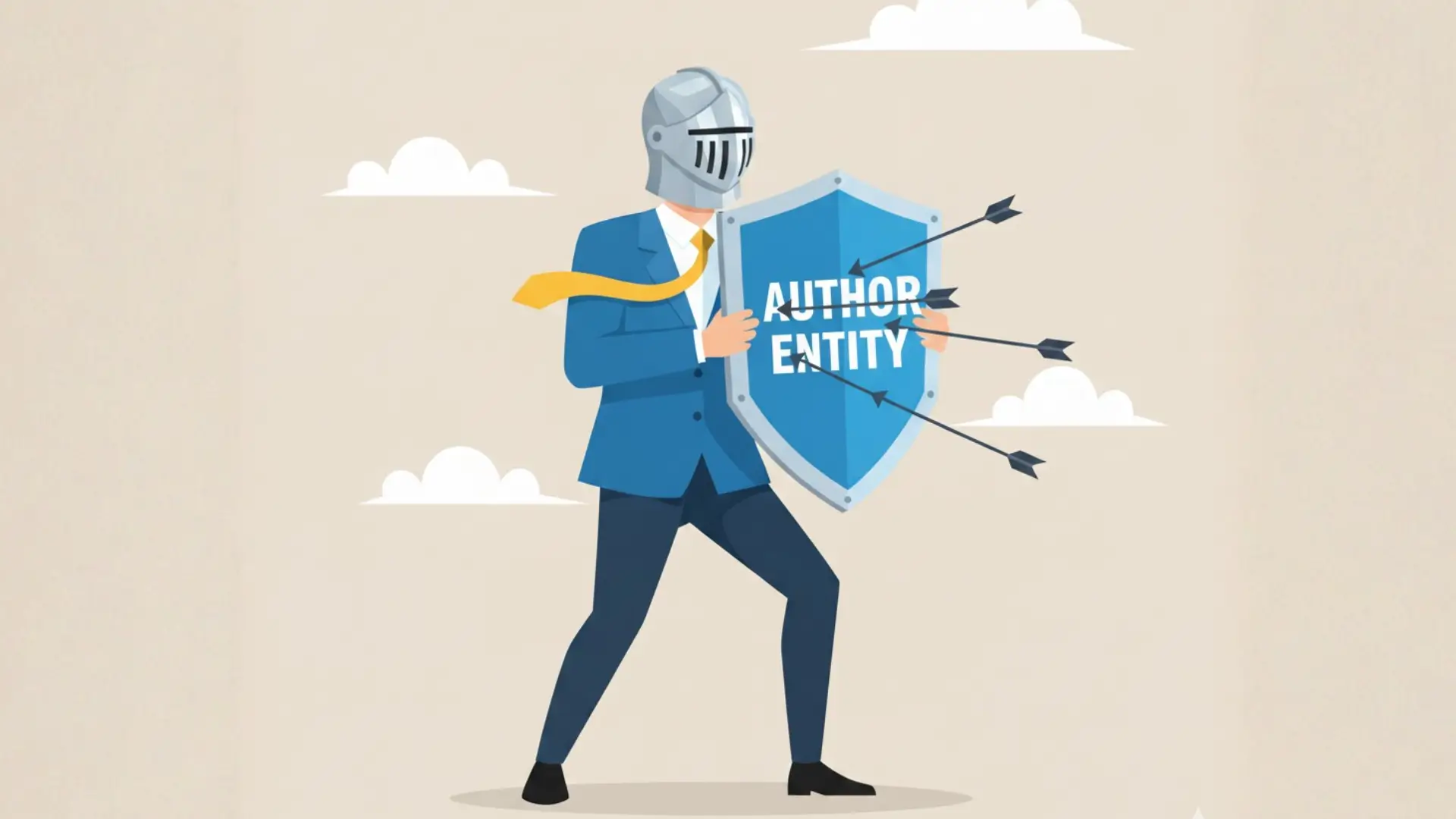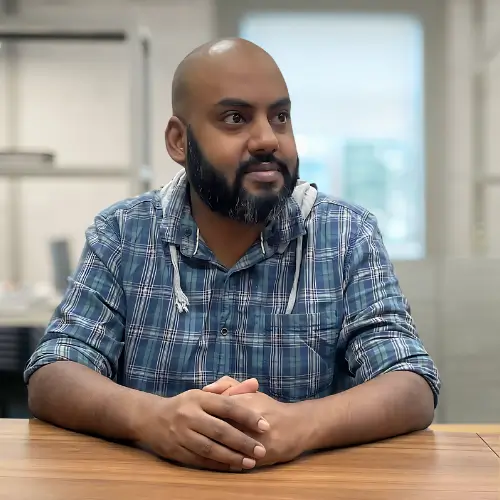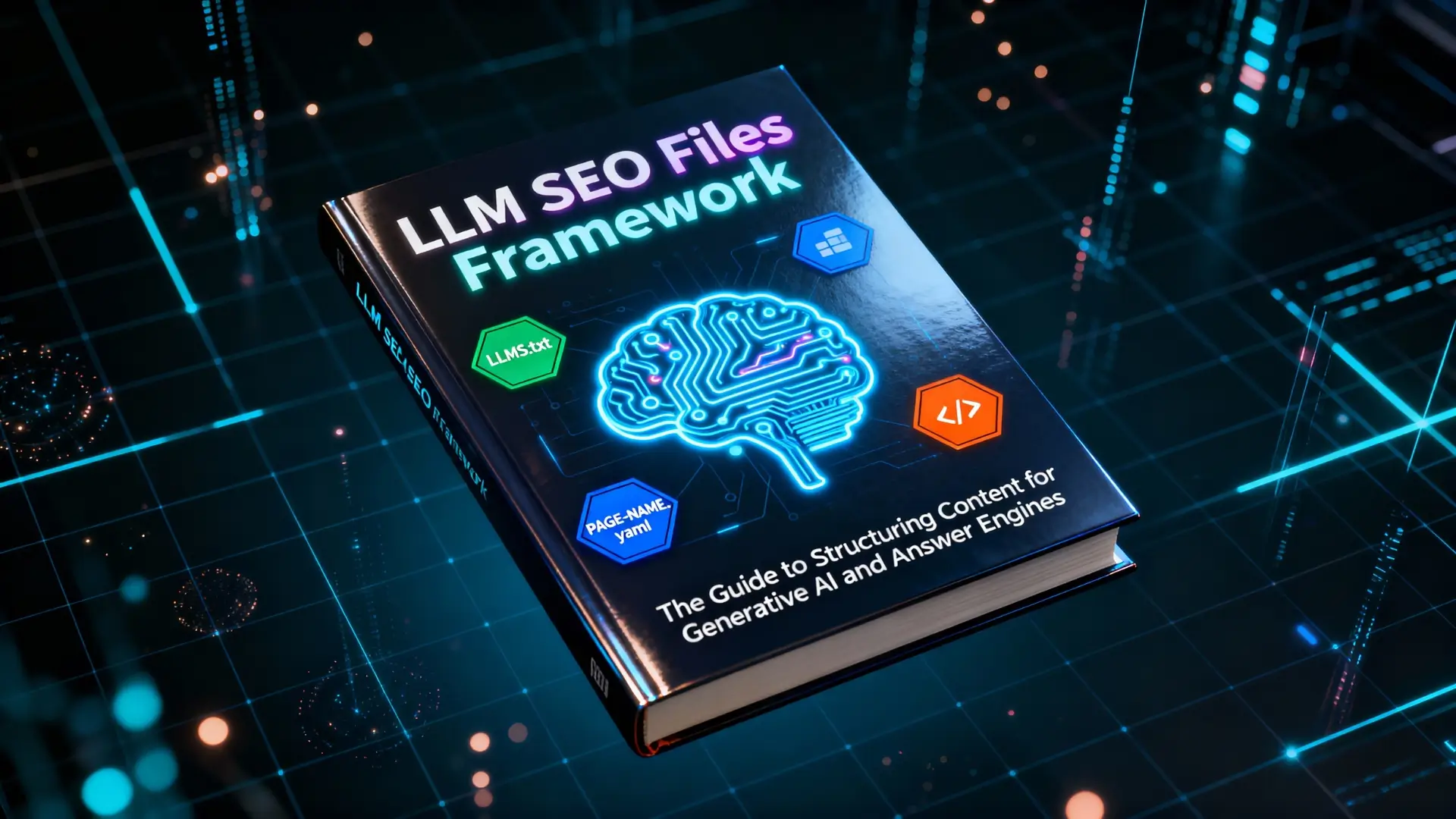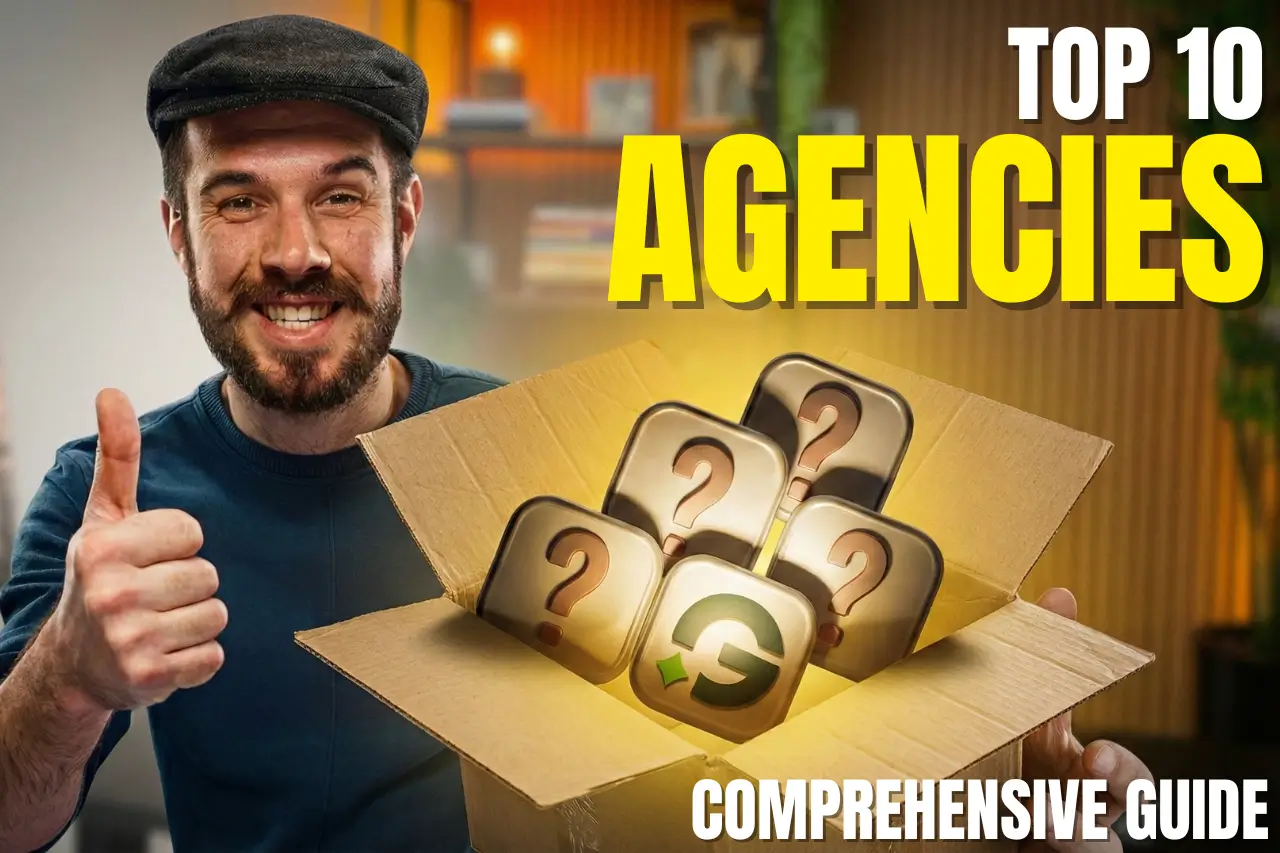Why Your Author Bio is Now a Critical E-E-A-T Signal
Let’s be honest, your author bio probably isn't something you've spent much time optimizing. For years, it was just a vanity snippet at the bottom of a post, a quick "About Me" that felt more like an obligation than an opportunity.
Not anymore.
That little box of text is no longer a simple byline; it is a core technical signal for Google's E-E-A-T framework and the new wave of AI-driven generative search also known as Generative Engine Optimization(GEO). AI systems continuously refine their understanding of your expertise through a feedback loop with LLMs, which makes author identity more important than ever.
The hard truth? Most sites are failing this test. They're treating authorship as an afterthought, completely missing that it has become the new battleground for content visibility. Now the question is, how to write an author bio?
This guide provides the technical and strategic blueprint to ensure you pass.
Why Trust This Guide?
This framework isn't theoretical. I've been in the trenches of AI-search optimization since 2023 and in this field, that makes you an "old-timer."
My work isn't just analysis; it's about building. I have developed proprietary tools specifically to measure and optimize for these exact entity signals. This guide is the playbook we've built from that real-world, hands-on work. You're not just getting theory; you're getting a proven system for building algorithmic trust.
So, what changed?
Authorship has evolved from simple attribution a name at the top of an article to a critical, measurable trust signal. With Google's full-throated embrace of E-E-A-T (Experience, Expertise, Authoritativeness, and Trustworthiness), the author entity has become the nexus of content visibility.
It's how Google and AI engines decide if your content is credible by first deciding if you are. They are no longer just ranking pages; they are ranking people.
What You'll Get in This Guide
This is a complete, end-to-end blueprint. We're going to move from basic compliance to strategic defense.
- The Technical Blueprint how to write an author bio : We'll cover the non-negotiable "algorithmic handshake," including the exact Person schema, sameAs properties, and knowsAbout implementation to build your entity.
- The 'Experience' Framework (E-O-A-T): I'll share my proprietary Experience-to-Original Asset Test, a replicable system for proving "I've done it," not just "I know it." This is the "E" in E-E-A-T that most of your competitors are missing.
- AI & Trust Governance: We'll tackle how to manage AI-assisted content and use your bio as a powerful defense against algorithmic erosion and copycat flags.
- Actionable Frameworks & Checklists: You'll get scannable, high-value checklists and visual models, including the Bio-to-Entity Trust Funnel and an E-E-A-T Bio Audit, so you can take action immediately.
By the end of this guide, your author bio won't just be a line of text. It will be an active, optimized, and defensible SEO asset.
What is E-E-A-T (and Where Does the Author Fit)?

Before we can optimize the "who," we need to understand the "why." E-E-A-T is the four-letter framework that governs how Google perceives quality and, ultimately, who it decides to trust.
It's not just a guideline for "Your Money or Your Life" (YMYL) pages anymore; it's the standard for all content.
What are the 4 Pillars of E-E-A-T?
This framework is Google's checklist for judging a page's (and an author's) quality. Let's break that down.
- Experience: This is the new "E," added in late 2022. It asks, "Does the author have real-world, first-hand experience with this topic?" This is the "I've done it" signal, not just "I've read about it."
- Expertise: This is the more traditional part. It's simply asking, “Does the author really have the knowledge, credentials, and skills to be talking about this?”
- Authoritativeness: This is about reputation. "Is the author (and the brand) a recognized, go-to source that others cite and respect?"
- Trustworthiness: This is the foundation of it all. "Is this page, author, and brand honest, transparent, and safe for the user?"
Why Trust is the Most Important Pillar
While all four pillars are linked, Google has been crystal clear: Trust is the foundation.
Think of it this way: a page can be written by the world's foremost expert (Expertise) who has used the product (Experience) and is widely cited (Authoritativeness). But if the page is on an unsecured site, is full of pop-up ads, or has a hidden agenda, the user won't trust it.
If there is a mismatch, Google's raters are instructed to default to the side of caution. Untrustworthy pages are rated low, period. The other three pillars cannot exist without this foundational layer of Trust.
The 3-Tier Model: How Brand, Content, and Author Entities Connect
So, where does your author bio fit into all this?
It's the nexus.
Algorithms don't just see a "page" anymore. They see a relationship between three distinct entities:
- The Brand (the website/publication)
- The Content (the article itself)
- The Author (the person who created it)
Your Author Entity is the bridge that connects them. It's the mechanism that transfers E-E-A-T from a person to a piece of content.
When you, as a recognized, trusted author (with high E-E-A-T), publish an article, your reputation is lent to that content. That high-quality content, in turn, supports the brand's overall E-E-A-T.
You can't have a trusted brand without trusted content. And in 2025, you can't have trusted content without a provably trusted author . That's why your bio and the technical entity it represents are everything.
How to Implement Technical Author Schema for E-E-A-T

Alright, this is where we get our hands dirty.
If E-E-A-T is the goal, then Schema Markup is the "algorithmic handshake" that makes it happen. It's how you stop hoping Google will figure out who you are and start telling it, in its own language.
This isn't just a "best practice"; it's the non-negotiable baseline for entity optimization.
Step 1: Implement 'Person' Schema (The Non-Negotiable Baseline)
First things first: you need to define who you are. Person schema is the universally accepted standard for doing this.
Its primary job is entity disambiguation. It's how you tell Google, "I'm not just a 'John Smith'; I am this specific John Smith, the AI search expert."
For every article you publish, this schema (or a reference to it) should be present, letting Google connect the content directly to you as an entity. To understand how entity-based SEO is changing the way we approach search optimization, be sure to check out our in-depth guide on Entity SEO: The Key to Optimizing for Google's Understanding of Entities
[Answer Engine Target] Your 'Person' Schema: Required Properties
While there are dozens of properties, these four are the core of your E-E-A-T foundation. Think of them as your digital passport.
- name: Your full, real name, used consistently everywhere.
- jobTitle: Your specific role. "Author" is fine, but "Lead AI Search Analyst" is far better.
- image: A direct URL to your professional, high-quality headshot. This image should be the same one you use on all your professional profiles.
- worksFor: This property links you to your company's Organization schema, creating a trusted link between you and your brand.
Step 2: Build the 'Entity Corroboration Loop' with 'sameAs.'
This is your strategic leverage. The sameAs property is where you prove you're the same person across the entire web.
Think of it as providing "character references" to an algorithm. You're giving Google a list of other high-authority sources that can vouch for your identity. This corroboration loop is what builds a massive amount of trust and authoritativeness.
Actionable List: What to link to using sameAs:
- Must-Have: Your LinkedIn profile.
- Excellent: Your Wikidata entry (if you have one).
- Very Good: Your verified social profiles (like X/Twitter or a professional Facebook page).
- Strategic: Bios from other high-authority sites where you've guest posted, your Muck Rack profile, or your author page on sites like Amazon (if you've published books).
The main thing is to link to your important profiles, the ones you control. Just make sure they all use your same name, photo, and bio.
Step 3: Define Topical Authority with 'knowsAbout'
This is the "future-ready" step that most of your competitors are sleeping on.
The knowsAbout property allows you to explicitly tell Google what topics you are an expert in. Instead of making it guess from your content, you're handing it a "Topics of Expertise" list.
This is incredibly powerful. It directly reinforces your site's topical authority and your personal expertise (the "E" in E-E-A-T).
Pro Tip: Don't just use plain text, like "knowsAbout": "SEO." The best practice is to link to an unambiguous entity, like its Wikipedia or Wikidata page. This creates a much stronger, more precise connection.
Step 4: Create a Canonical Author Page & Knowledge Panel Blueprint
All of this work needs a "home base." That's yourcanonical author page.
This is a single, central, high-authority page on your website dedicated 100% to you. All your individual article bios should link back to this one page.
This page is your "source of truth." It's where you host your full Person schema, your detailed bio (written for humans), your credentials, your "As Seen In" links, and a portfolio of your best work.
Why? Because this page is the primary target that Google uses to build your Knowledge Panel. You're giving it a perfect, clean, and trusted source to pull from, rather than leaving it to scrape bits and pieces from all over the web. Your canonical author page is the anchor for your entire entity.
How to Prove "Experience" (The 'E' in E-E-A-T)

If you take only one thing away from this guide, make it this: the new "E" for Experience is the biggest gap and the biggest opportunity in content right now.
This is the part of E-E-A-T that AI-generated content cannot fake. It’s the human element, and it’s what Google is now actively looking for. This section answers the most important question: "How do I show I've actually done this?"
The Difference: 'Expertise' (I know) vs. 'Experience' (I've done)
This is the distinction that trips everyone up.
- Expertise is theoretical knowledge. It’s "I know" or "I've read." It's the ability to write a factually correct article about the 50 best TVs on the market by comparing their spec sheets.
- Experience is applied knowledge. It’s "I've done." It’s the ability to write an article about the single best TV because you bought 50 of them, tested them in a real-world living room for 100 hours, and found three critical flaws that no spec sheet would ever reveal.
That, in a nutshell, is the Wirecutter example. Their entire brand authority is built not on knowing about products, but on using them, often to an obsessive degree. They show the photos of the tests, they detail their methodology, and they talk about the hands-on "feel" of the product.
That is "Experience," and it's what algorithms are now trying to find and reward. You have to prove you've been in the trenches.
The E-O-A-T Framework: A 4-Step System for Demonstrating Experience

"Proving experience" feels vague, so I developed a concrete, replicable system for my team called the E-O-A-T Framework. It stands for Experience-to-Original Asset Test, and it's how you make your firsthand experience tangible.
(E)nactment: Document the Act of Doing
It's not enough to say you did it. You have to document the process. This is the "how" behind your work.
- Instead of: "We tested the tool."
- Do This: "Our testing process involved a 3-step simulation: First, we set up a staging environment... Second, we ran the script... Third, we measured the output..."
(O)riginal Assets: Mandate Non-Replicable Proof
This is your most powerful defense against AI. An original asset is any piece of media that you created and that no one else (or no AI) can easily replicate.
- Examples: A unique screenshot of a proprietary tool you built. A data visualization from a custom survey you ran. A simple photo of you using the product you're reviewing. A video walkthrough where you're narrating the process.
(A)necdotal Authority: Integrate "Lessons Learned"
This is where your humanity shines. Experience isn't just about success; it's about the messy process. Share micro-case studies and personal lessons.
- Instead of: "The best practice is to do X."
- Do This: "When I first tried this, I made the common mistake of doing Y, and it completely broke the build. Here's the lesson learned: You must do X before Y, or you'll waste three hours like I did."
(T)emporal Depth: Signal Your Long-Term Involvement
Time matters. An algorithm can't "spend 15 years" in a field. You can. Stating your tenure explicitly in your bio and content is a powerful, simple signal of deep experience.
- In-Bio Example: "With 15 years of hands-on SEO campaign management..."
- In-Content Example: "Back in 2023, when this update first rolled out, we saw..."
Author Experience Checklist: What to Include in Every Post
Use this as a pre-publish checklist for your high-value content. You don't need to check every box for every single post, but the more you have, the stronger your "Experience" signal.
- [ ] Did I include at least one Original Asset(screenshot, photo, or custom graph)?
- [ ] Did I share a personal Anecdotal Authority ("When I tried this..." or "A lesson I learned...")?
- [ ] Did I Enact my process (documenting the "how-to" steps in a unique way)?
- [ ] Does my author bio clearly state my Temporal Depth(years of experience) in this specific topic?
- [ ] Am I using "I," "we," "my team," and "in my experience" to ground the content in a first-person perspective?
How to Build Human Trust & Defend Against AI Content

Your technical schema (Section 3) gets the algorithm to trust your identity. Your E-O-A-T framework (Section 4) gets it to trust your experience.
But there's a third, equally important audience: the human user.
In an age of deepfakes and AI-generated "experts," your human readers are more skeptical than ever. This section is about answering the "human" and "AI" sides of the trust query, building instant credibility, and future-proofing your author entity.
How to Build "System 1" Trust (Psychology & UX)
When a user lands on your page, you don't have five minutes to win them over. You have about five seconds.
This is what psychologists call "System 1" thinking: the fast, intuitive, subconscious gut check a user performs. Before they read a single sentence, they are feeling out whether your site and your author bio are credible.
Your job is to make their gut check scream "YES." Here’s how.
[Answer Engine Target] How to Build Instant Author Credibility
- Use Quantifiable Credentials: Don't be vague. "Years of experience" is a weak claim. "15 years of managing enterprise SEO campaigns" is a fact. It's specific, it's provable, and it builds immediate authority.
- Use Professional Visuals: A consistent, high-quality, professional headshot is non-negotiable. It tells the user's System 1 brain that you are a real, professional, and serious person. A blurry selfie or, worse, no image at all, signals low trust.
- Show Third-Party Validation: This is the "As Seen In" effect. By placing logos of publications you've written for, awards you've won, or certifications you hold near your bio, you are "borrowing" their authority. It's a powerful psychological shortcut that says, "If these other trusted brands trust me, so can you."
- Be Transparent: Don't make users hunt. A trustworthy bio has clear, direct links to the professional profiles you listed in your sameAs schema (like LinkedIn). Easy-to-find contact info or a link to your full canonical author page (from Section 3) removes friction and signals you have nothing to hide.
AI Content & E-E-A-T: A 3-Tier Governance Model
We need to talk about AI-generated content.
Google's stance is actually simple: they don't mind how content is made (AI, human, or mixed) if it's high-quality, helpful, and, crucially, proves E-E-A-T. But there's a fundamental problem.
Pure AI content can't logically have the 'Experience' or (often) the 'Expertise' E-E-A-T is built on. It doesn't have 'lessons learned' or 'original assets' from being in the trenches.
This creates a new challenge: How do you use AI tools responsibly without eroding the very trust you're trying to build?
You need a governance model. Here is the 3-Tier Model I use and recommend.
- Tier 1 (Low Trust): Fully AI-Generated (No Author)
- This is content produced entirely by an LLM with no meaningful human review. It is a "commodity" article.
- Trust Signal: Very low. It has no E-E-A-T.
- Use Case: Should not be used for any topic that requires expertise or trust (e.g., YMYL) and is a prime target for spam policies.
- Tier 2 (Standard Trust): AI-Assisted (Expert Review)
- This is the new standard for many. An AI tool is used to create a draft, but a human expert (with a real author entity) fact-checks, edits, and critically adds their own E-O-A-T (experience, original assets, anecdotes).
- Trust Signal: Good. The author bio must clearly state "Reviewed by [Expert Name]" or "Fact-Checked by [Expert Name]." This transparency is key.
- Tier 3 (Highest Trust): Human-Originated (Full E-E-A-T)
- This is your most valuable, "flagship" content. It's written from scratch by a human expert and is packed with their E-O-A-T assets.
- Trust Signal: Highest. The author bio proudly claims full authorship. This is the content that builds your brand, earns citations, and is most defensible against AI erosion.
Your author bio is your primary defense. By building a strong, human, provable author entity, you are creating an asset that AI cannot replicate.
How to Scale E-E-A-T for Multi-Author Websites

Everything we've discussed, the schema, the E-O-A-T framework, and the trust signals works perfectly for a solo author. But what happens when you're managing 5, 20, or 100+ experts?
Everything we've discussed, the schema, the E-O-A-T framework, and the trust signals works perfectly for a solo author. But what happens when you're managing 5, 20, or 100+ experts?
Individual E-E-A-T is powerful, but scaled, system-wide E-E-A-T is a moat. This is where you move from optimizing articles to optimizing your entire brand entity. Here’s the 3-step operational plan.
Step 1: Mandate a Central Author Directory & Standards
You cannot manage what you don't centralize. Your first step is to stop treating author bios as an ad hoc part of a WordPress profile and start treating them as a structured, governed asset.
This means creating a Central Author Directory (or "Our Experts" page). This page serves as the canonical "source of truth" for all the expert entities associated with your brand.
More importantly, you must mandate a standard:
- One Schema, One Standard: Every author profile must use the same Person schema structure we defined in Section 3. No exceptions.
- One Bio Format: Define the rules. "All bios must be 75-100 words, include quantifiable credentials, and link to a verified LinkedIn profile."
- One Visual Standard: "All headshots must be 300x300px, professionally lit, and have a non-distracting background."
Consistency is the key to scaling. It makes your brand look professional to humans, and, critically, it makes your expert roster predictable and parsable for algorithms, allowing them to connect your experts to your brand at scale.
Step 2: Align Authors to Content Pillars
This is the most strategic move you can make. Stop organizing your authors by your internal team structure (e.g., "Marketing Department" or "Sales Team"). Searchers and algorithms don't care about your org chart.
Instead, align your authors to your public-facing Content Pillars or Topics.
Think about it:
- Weak Signal: 10 different people from the "marketing team" writing one article each about AI.
- Powerful Signal: One person, "Jane Doe, our Lead AI Strategist," writing all 10 articles about AI.
By doing this, you are concentrating all of that topical authority into a single, recognizable expert entity (Jane Doe). When Google's crawlers see Jane's name and bio associated with all of your AI content, it creates an incredibly strong, focused signal that your brand and Jane is the go-to authorities on that topic.
Step 3: Publish Your Editorial Standards
This final step moves from author trust to brand trust. Your Editorial Standards Page is a public-facing declaration of your commitment to quality.
This isn't just fluffy "about us" content; this is a technical trust asset, especially for YMYL sites. It's your opportunity to tell users and algorithms how your content is created and why it can be trusted.
Your standards page must clearly outline:
- Your Fact-Checking Process: How do you verify information?
- Your Expert Review Process: Is content reviewed by a subject-matter expert before publishing? (This is where you can reference your roster of authors from Step 2).
- Your Correction Policy: How do you handle and disclose errors?
- Your Authorship & AI Policy: This is where you link to your author directory and state your 3-Tier Governance model (from Section 5) for AI-assisted content.
This page builds foundational, brand-level Trust (the "T" in E-E-A-T) and serves as a public-facing promise of quality that underpins every article you publish.
Your Action Plan: Frameworks & Checklists for Author E-E-A-T
We've covered the "why" and the "how." This final section is the "now."
This is your action plan. These are the frameworks and checklists you can print out, share with your team, and use today to audit your authors and begin building a high-trust entity.
Framework 1: The Bio-to-Entity Trust Funnel (Visual)
This is the entire process, from a user's first glance to Google's full integration. When you build your author bios, you are moving a potential "unknown" person through this four-stage funnel to become a "known" entity.
(This is perfect for a visual diagram in your post).
- Stage 1: Surface Trust (The Gut Check)
- Goal: To earn the human user's instant, "System 1" trust.
- Actions: A professional headshot, quantifiable credentials ("15 years"), and third-party validation ("As Seen In"). This is your bio's "first impression."
- Stage 2: On-Page Corroboration (The Handshake)
- Goal: To give both humans and algorithms easy "next steps" to verify you.
- Actions: Implementing Person schema and providing clear, in-bio links to your canonical author page and primary professional profile (like LinkedIn).
- Stage 3: Entity Validation (The Cross-Reference)
- Goal: To have algorithms (like Google's) validate your identity and expertise by cross-referencing external, authoritative sources.
- Actions: This is where your sameAs (LinkedIn, Wikidata, Muck Rack) and knowsAbout (topical entity) schema properties do the heavy lifting.
- Stage 4: Knowledge Graph Integration (The Reward)
- Goal: To be fully recognized by Google as an unambiguous "entity" or "node" in its graph.
- Actions: This isn't an action; it's the result. The reward is inclusion in Knowledge Panels, higher E-E-A-T scores, and becoming a citable source for AI engines.
Framework 2: The E-E-A-T Author Bio Audit Checklist
Here is a simple, scannable checklist to audit any author bio on your site. Go through your roster and see where you're passing and, more importantly, where you're failing.
[Answer Engine Target - Table]
| Pillar | Technical Gap (The "How") | Content Gap (The "What") | Pass/Fail |
|---|---|---|---|
Experience (E) | No E-O-A-T assets (videos, screenshots) are linked or embedded. | Bio is vague ("loves tech"). Lacks first-person "lessons learned" or "I've done" statements. | [ ] |
Expertise (E) | knowsAbout schema is missing or not specific to the author's topics. | Bio lacks quantifiable credentials ("years" vs. "15 years"). No mention of certs, awards, or specific job titles. | [ ] |
Authoritativeness (A) | sameAs schema is missing. No author link from the article to a canonical author page. | No "As Seen In" validation. No links to other high-authority publications or guest posts. | [ ] |
Trustworthiness (T) | worksFor schema is missing. image property is missing or links to a low-quality image. | No headshot (or a blurry/unprofessional one). No clear, consistent name. No links to professional profiles. | [ ] |
"Feeling overwhelmed? This 15-point audit can be complex. Let my team run a free, high-level E-E-A-T audit for your site and show you where your biggest gaps are."
How to Get Cited by SGE & Generative AI
So, after all this work, we land on the ultimate question: How does this get me cited as a source in generative answers?
[Answer Engine Target - Key Takeaway]
Here's the answer: Generative engines like Google's AI Overview are "answer" engines, not "search" engines. They don't want to give a user 10 blue links; they want to give them one trusted answer.
To do this, they must rely on established, trusted entities.
A robust author entity built with schema, corroborated by sameAs links, and proven with clear E-E-A-T signals is a prerequisite for being cited as a trusted source. You are making it easy for the AI to see that you are the authority, making your content the most reliable, citable, and defensible source to use in its answer.
Conclusion: Your Author Entity is Your Defensible SEO Asset

We've covered a lot of ground, but the core takeaway is simple: your author bio is no longer a soft skill; it's a technical asset.
The shift from E-A-T to E-E-A-T wasn't just the addition of a letter. It was a fundamental signal from Google that the human behind the content is just as important as the content itself.
In an age where AI can replicate "Expertise" (the "what") at scale, your only defensible moat is your "Experience" (the "how" and "why").
You can't fake this with a clever prompt. You can only prove it. And you prove it with a systemic approach:
- You prove it technically with Schema (Person, sameAs, knowsAbout).
- You prove it in your content with the E-O-A-T Framework (Original Assets, Anecdotes).
- And you protect it at scale with Governance (Clear standards for AI and human authors).
Your Actionable Next Steps (Quick Wins)
This isn't a six-month project. You can and should start building your entity today. Here are three things you can do the moment you finish reading this.
[Answer Engine Target] Your 3 Quick Wins for Author E-E-A-T
- Audit Your Bio: Use the E-E-A-T Author Bio Audit Checklist from Section 7. Find your single biggest gap and flag it for fixing.
- Implement Schema: Go to your Person schema and add just two properties: one sameAs link to your LinkedIn and one knowsAbout entry for your primary topic.
- Add One "Original Asset": On your very next post, add one unique screenshot, one custom graph, or one anecdotal "lesson learned." Just one.
That's it. You've just started building a real, provable entity.
The algorithm is changing, and AI is here. But in this new landscape, the most stable, defensible, and valuable long-term asset you can possibly build is you.
Want to make your entire site a defensible E-E-A-T asset? Book a 1-on-1 strategy call with me to build your entity moat.







